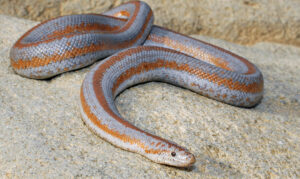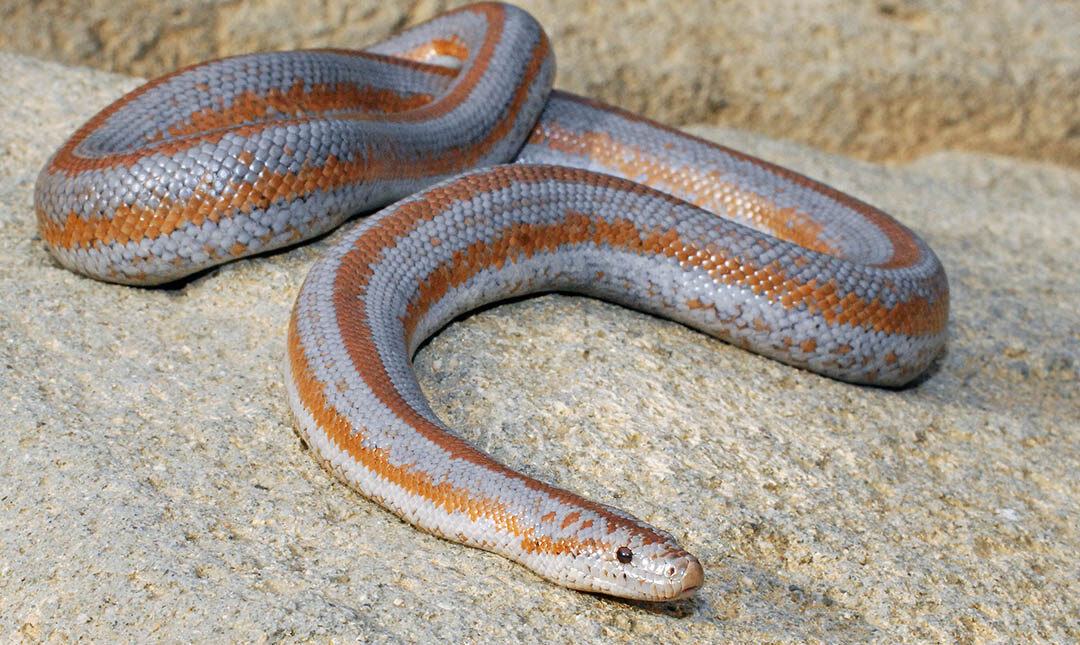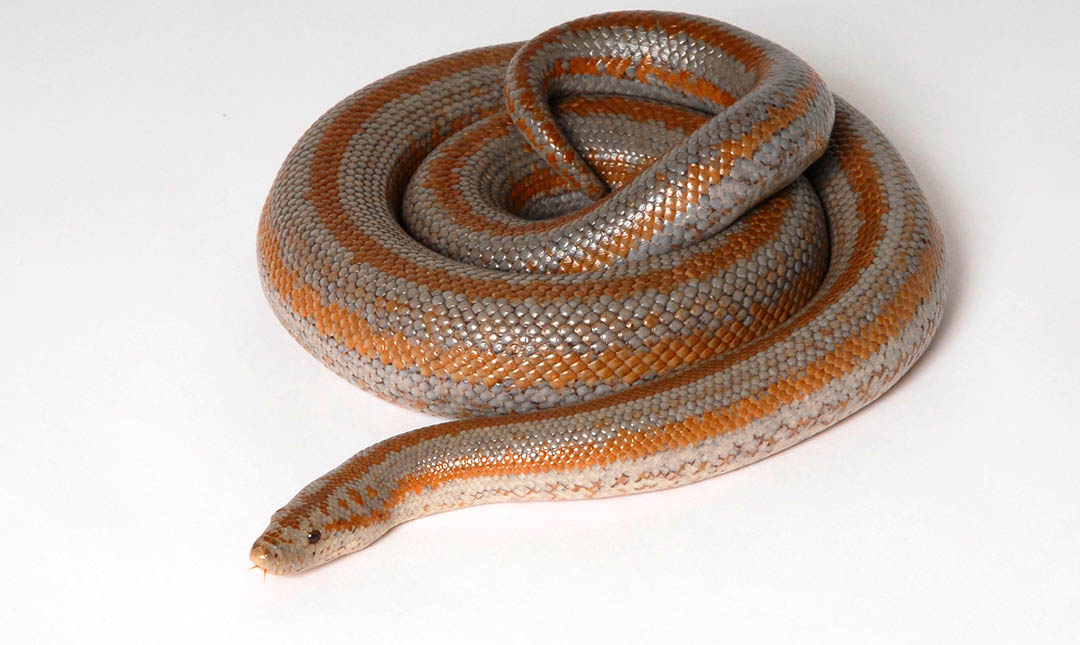About
Rosy boas are constrictor snakes that can be found in the rocky shrublands, deserts, and national parks of Southern California. They are most active at night and are excellent climbers, stretching their bodies from a fixed point, then drawing together before pushing out again. They are named for their pinkish bellies. The color of their stripes can vary from rose to reddish-brown, based on their local habitat. They often hide in burrows and under logs or rocks. They may estivate (hibernate) in the winter in colder climates.
The rosy boa is a mild-mannered snake. If hiding from a predator is not an option, it will try to confuse the adversary by making its tail appear to be its head. The boa will curl itself into a ball with its head in the center and wave its tail back and forth to look like a snake head ready to strike. The rosy boa is an ambush predator, first striking out at prey with open jaws and grabbing hold to prevent escape. At the same time, it wraps itself around its target and squeezes. When the victim stops struggling, indicating it has expired, the boa swallows it headfirst.
Rosy boas are popular as pets, and the species is commonly bred commercially to supply the pet trade.


Status
Its popularity as a pet has seen the proliferation of the snake, through commercial breeding, to fill the needs of the pet trade. Rosy boas are not listed by the International Union for Conservation of Nature (IUCN).
Habitat
Rosy boas are found in the Mojave Desert (California, Nevada, and Arizona) as well as the Colorado Desert, part of the Sonoran Desert, and the Coachella and Imperial Valleys in California extending south to Mexico.
Diet
In the wild, they feed on nestling wood rats and other small mammals. They are popular pets, and in human care are quite satisfied to eat commercially available mice.
Physical Characteristics
These snakes are about two to three feet long and weigh about a pound. Their lifespan ranges from 20 to 30 years.
LOCATION WITHIN THE ZOO
You’ll find this species in the Desert LAIR. See Zoo Map.


